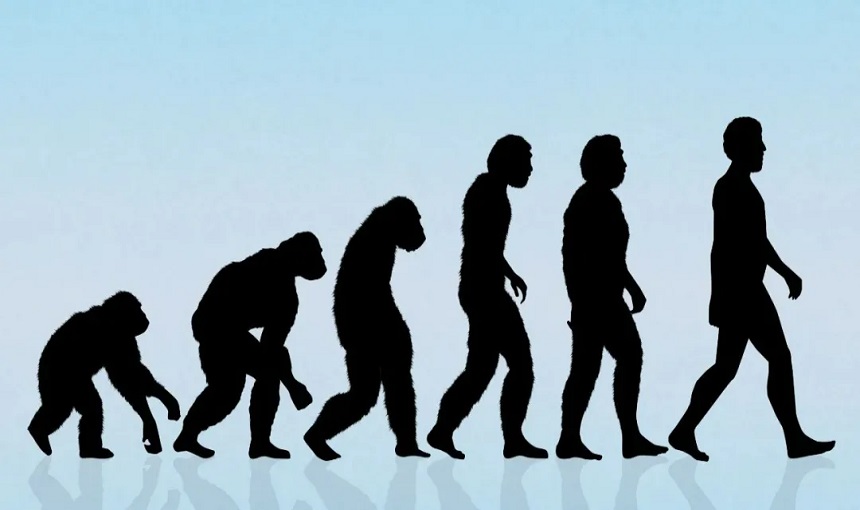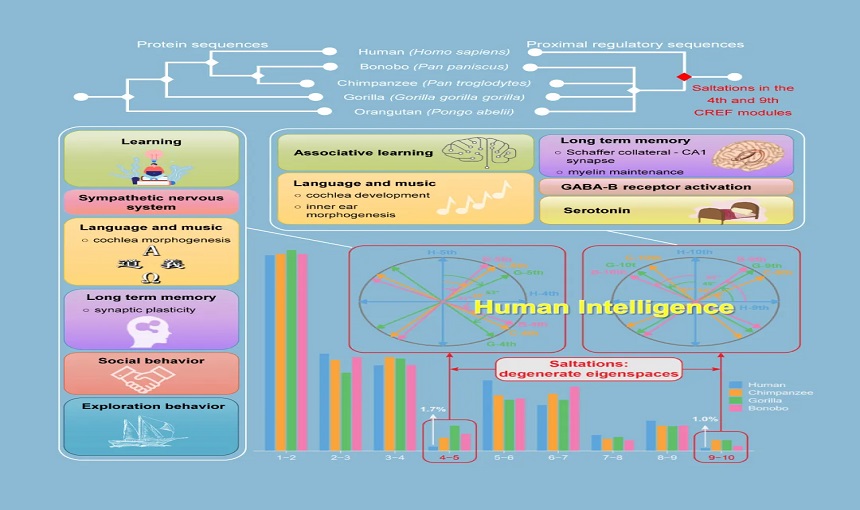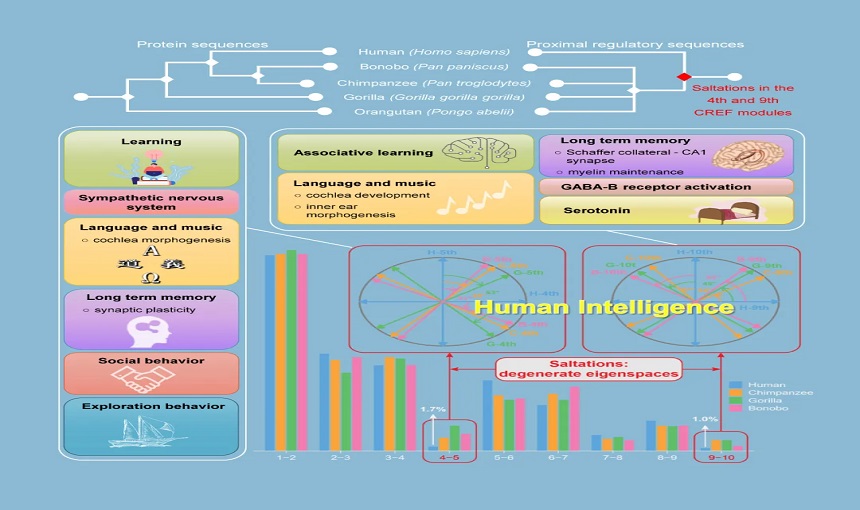-
Home / AMSS Events / All News
Where does humanity come from? The Human Intelligence Evolved from Cis-regulatory Saltations
 Watch Video
Watch Video
03 23, 2025
The divergence rate between the alignable genomes of humans and chimpanzees is as little as 1.23%. This raises a fundamental question: what genetic changes account for their dramatic phenotypical difference.
Researchers from the Academy of Mathematics and Systems Science (AMSS) at the Chinese Academy of Sciences (CAS) have discovered that the saltation (jump change) of cis-regulatory element frequency (CREF) modules can explain the cognition and intelligence unique to humans.

▲ The human intelligence evolved from cis-regulatory saltations
1. Saltations in Gene Regulation Make Humans Unique
On its 125th anniversary, Science magazine posed 125 unsolved scientific questions, one of which “What genetic changes made us uniquely human?” was listed as one of the 25 core problems.
Scientists initially hypothesized that the differences between humans and chimpanzees might be due to mutations in protein-coding genes. However, subsequent research revealed that structural differences in proteins were minimal.
Recently, a research group from AMSS shifted their focus from protein sequences to their regulatory regions. They represented gene regulatory sequences using the cis-regulatory element frequency (CREF) matrix and mathematically transformed transcriptional regulatory information from humans and extant ape species—such as chimpanzees, bonobos, and gorillas—into eigen-modules that could be aligned and compared.
Surprisingly, their study found that during human evolution, certain regulatory modules underwent jump changes, termed saltations. These saltations resulted in the emergence of new gene regulatory patterns, leading to a leap in human cognition and intelligence.
2. Saltation Unravels the Secret of Human Intelligence
The researchers extracted 10 principal regulatory modules from vast genomic datasets and ranked them in descending order of energy. By comparing the CREF modules of four hominid species, they identified two key saltations: one between the 4th and 5th eigen-levels and another between the 9th and 10th. The newly regulated gene targets include those associated with long-term memory, cochlea development, learning, exploration behavior, and social behavior.
The ability to use spoken language and create music is uniquely human. The cochlea, a crucial sensory organ, plays a fundamental role in language acquisition and musical development. Notably, cochlea development is a key biological process regulated by both the newly emerged 4th and 9th CREF modules in humans. Over the course of evolution, subtle changes in the size, position, and orientation of the human cochlea have occurred, supporting this adaptation.

▲The cis-regulatory element frequency (CREF) matrix that represent the transcriptional regulation and the saltation from apes to human
Furthermore, the study found that along the 4th human gene eigenvector, a significant portion of genes is associated with social behavior, adult behavior, and regulation of behavior. This suggests that genes related to social behavior are expressed more in humans through transcriptional regulation. The findings imply that certain aspects of social behavior are already encoded within the human genome. Rational social behavior enabled humans to establish societies of law, commerce, academia, and more. Through societies, collective intelligence emerged and accumulated over time, aided by long-term memory.
These findings validate the use of whole-genome CREF-based eigen-modules to elucidate the genetic basis of human cognition and intelligence. This model represents the first mathematical framework to explain species saltation. In the future, this approach could be applied to the evolutionary study of other species. Moreover, insights from natural human intelligence revealed by this study may provide valuable references for the development of artificial intelligence.
It is our hope this discovery will spread across the world. As humanity gains a deeper understanding of who we are and where we came from, we will gain greater insight into where we are headed. This knowledge will inspire us to strive for better education, a stronger economy, a healthier environment, and ultimately, world peace.
The links to the research articles:
https://onlinelibrary.wiley.com/doi/10.1002/qub2.88
https://onlinelibrary.wiley.com/doi/10.1002/qub2.92
 Contacts:
Contacts:
 E-mail:
E-mail:

Copyright@2008,All Rights Reserved, Academy of Mathematics and Systems Science,CAS
Tel:86-10-82541777 Fax: 86-10-82541972 E-mail: contact@amss.ac.cn
京ICP备05002806-1号 京公网安备110402500020号








